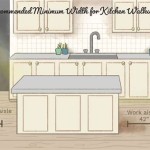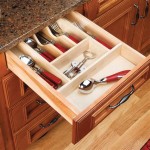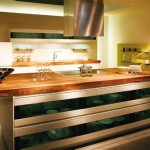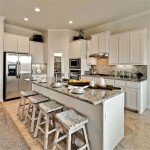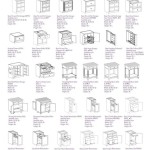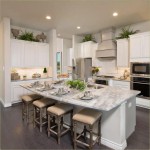Types of Kitchen Cabinets and Drawers
Kitchen cabinets and drawers are more than just storage solutions; they are integral components that define the functionality, style, and overall aesthetic of a kitchen. Choosing the right types of cabinets and drawers requires careful consideration of factors such as available space, budget, design preferences, and functional needs. This article provides an overview of different types of kitchen cabinets and drawers, exploring their characteristics, advantages, and disadvantages.
Base Cabinets
Base cabinets, also known as lower cabinets, form the foundation of the kitchen. They are installed directly on the floor and support the countertop. Due to their location, they are typically used for storing heavier items and appliances.
Standard Base Cabinets: These are the most common type, typically measuring 34.5 inches in height and 24 inches in depth. Standard base cabinets offer ample storage space and can be customized with shelves, drawers, or pull-out organizers.
Drawer Base Cabinets: These feature a stack of drawers, ideal for storing utensils, cookware, and other frequently used items. Drawer base cabinets maximize accessibility and organization within the kitchen.
Sink Base Cabinets: Designed to accommodate the kitchen sink, these cabinets typically have a false front to conceal plumbing. They are often equipped with features like tilt-out trays or sponge holders to optimize the limited space.
Corner Base Cabinets: Located in the corners of the kitchen layout, these cabinets pose a unique storage challenge. Various solutions exist to maximize corner space, including lazy Susans, blind corner pull-outs, and angled cabinets.
Appliance Base Cabinets: Specifically designed to house appliances like ovens, dishwashers, and microwaves, these cabinets ensure a seamless and integrated look within the kitchen.
Wall Cabinets
Wall cabinets, also known as upper cabinets, are mounted on the wall and provide storage above the countertop. They are typically used for storing dishes, glassware, and pantry items.
Standard Wall Cabinets: These cabinets commonly measure 12 to 18 inches in depth and vary in height from 30 to 42 inches, depending on the ceiling height and desired look. They offer ample storage space and can be customized with shelves, glass doors, or open shelving.
Over-the-Refrigerator Cabinets: Designed to fit above the refrigerator, these cabinets provide convenient storage for larger items or less frequently used appliances.
Microwave Cabinets: Similar to appliance base cabinets, these are designed to house a microwave, either built-in or countertop models. They help to free up counter space and integrate the microwave into the kitchen design.
Corner Wall Cabinets: Similar to corner base cabinets, these cabinets are designed to maximize storage space in the corners of the kitchen layout. They are often equipped with rotating shelves or angled doors for easy access.
Tall Cabinets
Tall cabinets, also known as pantry cabinets or utility cabinets, extend from the floor to the ceiling, providing maximum vertical storage. They are ideal for storing pantry items, cleaning supplies, or larger appliances.
Pantry Cabinets: These cabinets are specifically designed for storing food items and often feature adjustable shelves, pull-out drawers, and door-mounted racks to optimize organization.
Utility Cabinets: These cabinets are used for storing cleaning supplies, brooms, mops, and other household items. They typically have adjustable shelves and door organizers to accommodate various items.
Linen Cabinets: Although less common in kitchens, a tall linen cabinet can be used to store tablecloths, napkins, and other dining linens.
Cabinet Construction
The construction of kitchen cabinets plays a significant role in their durability, aesthetics, and overall lifespan. Different construction methods offer varying levels of quality and cost.
Framed Cabinets: These cabinets feature a face frame, typically made of solid wood, attached to the front of the cabinet box. The frame provides structural support and a surface for attaching doors and drawers. Framed cabinets offer a traditional look and are known for their stability.
Frameless Cabinets: Also known as European-style cabinets, these cabinets do not have a face frame. The doors and drawers are attached directly to the cabinet box, creating a sleek and modern appearance. Frameless cabinets offer easier access to the interior and maximize storage space.
Inset Cabinets: These cabinets feature doors and drawers that fit flush within the face frame, creating a clean and seamless look. Inset cabinets require precise craftsmanship and tend to be more expensive than framed or frameless cabinets.
Cabinet Materials
The materials used in cabinet construction greatly affect their appearance, durability, and cost. Common cabinet materials include:
Solid Wood: Solid wood cabinets offer a natural and elegant look, known for their durability and longevity. Popular wood species for cabinets include maple, oak, cherry, and hickory. Solid wood cabinets are typically the most expensive option.
Plywood: Plywood is an engineered wood product made from layers of wood veneer glued together. It is a stable and durable material, less prone to warping or cracking than solid wood. Plywood is often used for cabinet boxes and interior components.
Particleboard: Particleboard is a composite material made from wood chips and resin. It is a more affordable option than solid wood or plywood but is less durable and more susceptible to moisture damage. Particleboard is often used for cabinet boxes in budget-friendly kitchens.
Medium-Density Fiberboard (MDF): MDF is another engineered wood product made from wood fibers and resin. It is a smooth and stable material, ideal for painting or laminating. MDF is commonly used for cabinet doors and drawer fronts.
Laminate: Laminate is a thin layer of plastic bonded to a substrate, such as particleboard or MDF. It is a durable, affordable, and easy-to-clean option, available in a wide range of colors and patterns. Laminate cabinets are a popular choice for modern kitchens.
Thermofoil: Thermofoil is a vinyl film that is heat-sealed to a substrate, typically MDF. It is a seamless and durable finish, resistant to chipping and peeling. Thermofoil cabinets are often used for contemporary designs.
Drawer Types and Features
Kitchen drawers come in various types and configurations, each designed for specific purposes and offering different levels of functionality. The type of drawer chosen can significantly impact the efficiency and organization of a kitchen.
Standard Drawers: These are the most common type of kitchen drawers, typically used for storing utensils, cutlery, and smaller items. They usually have a single compartment and are available in various widths and depths.
Pot and Pan Drawers: These drawers are designed for storing pots, pans, and other cookware. They are typically deeper and wider than standard drawers to accommodate larger items. Many pot and pan drawers feature dividers or organizers to prevent items from sliding around.
Spice Drawers: These drawers are specifically designed for storing spices, with tiered or slotted inserts to keep spice containers organized and easily accessible. They can be located near the stove for convenient access while cooking.
Cutlery Drawers: These drawers are equipped with dividers or inserts to organize cutlery, such as forks, knives, and spoons. They are typically located near the dishwasher or dining area for easy access when setting the table.
Pull-Out Drawers: These drawers are hidden behind cabinet doors and pull out for easy access to items stored in the back of the cabinet. They are often used in base cabinets to maximize storage space and prevent items from getting lost.
Soft-Close Drawers: These drawers feature a mechanism that gently and quietly closes the drawer, preventing slamming and reducing wear and tear on the cabinet. Soft-close drawers are a popular upgrade for modern kitchens.
Full-Extension Drawers: These drawers extend fully out of the cabinet, providing complete access to all items stored inside. They are particularly useful for deep drawers where items at the back might otherwise be difficult to reach.
Hardware and Accessories
Cabinet hardware and accessories play a crucial role in the functionality and aesthetics of kitchen cabinets and drawers. Knobs, pulls, hinges, and drawer slides can significantly impact the overall look and feel of the kitchen.
Knobs and Pulls: These are the most visible hardware elements, used for opening and closing cabinet doors and drawers. They come in a wide range of styles, materials, and finishes, allowing for customization to match the kitchen design. Common materials include metal, wood, glass, and ceramic.
Hinges: Hinges are used to attach cabinet doors to the cabinet box. Various types of hinges are available, including concealed hinges, exposed hinges, and self-closing hinges. The choice of hinge can affect the functionality and appearance of the cabinets.
Drawer Slides: Drawer slides allow drawers to open and close smoothly and quietly. Different types of drawer slides offer varying levels of weight capacity, extension, and features like soft-close mechanisms. Common types include ball-bearing slides, roller slides, and undermount slides.
Cabinet Organizers: A wide range of cabinet organizers are available to maximize storage space and improve organization within the kitchen. These include pull-out shelves, spice racks, utensil dividers, and pot lid organizers. They help to keep items neatly arranged and easily accessible.
Lighting: Under-cabinet lighting is a popular addition to kitchens, providing task lighting for food preparation and highlighting countertop surfaces. LED strip lights or puck lights are commonly used for under-cabinet lighting.
Key Considerations When Choosing Cabinets and Drawers
Choosing the right kitchen cabinets and drawers involves several key considerations to ensure functionality, style, and value.
Budget: Determine a realistic budget for cabinets and drawers, considering materials, construction, hardware, and installation costs. Explore different options within the budget range to find the best combination of quality and affordability.
Space: Assess the available space in the kitchen and plan the cabinet layout accordingly. Consider the placement of appliances, countertops, and walkways to optimize functionality and flow.
Style: Choose a cabinet style that complements the overall design of the kitchen and reflects personal preferences. Consider factors like door style, finish, hardware, and decorative elements.
Functionality: Prioritize functional needs and choose cabinet features that enhance efficiency and organization. Consider factors like drawer configurations, pull-out shelves, and specialized organizers.
Durability: Select durable materials and construction methods that can withstand daily use and resist wear and tear. Consider factors like moisture resistance, scratch resistance, and ease of cleaning.
Ultimately, selecting the right kitchen cabinets and drawers requires a careful evaluation of individual needs and preferences. Careful planning and research can help ensure that the chosen cabinets and drawers provide years of functionality, beauty, and enjoyment.

Types Of Cabinets Every Kitchen Must Have Blog

5 Types Of Kitchen Cabinet Drawers And 2 Drawer Fronts

11 Drawer Designs For An Efficient Kitchen

8 Cabinet Door And Drawer Types For An Exceptional Kitchen

The Diffe Types Of Cabinet Storage Solutions Collection

Types Of Kitchen Cabinets 101 Guide For Homeowners

9 Essential Kitchen Cabinet Types Fitzgerald Kitchens

Kitchen Cabinets Versus Drawers Pros Cons Apartment Therapy
:max_bytes(150000):strip_icc()/Drawers-Rompel-56a575be5f9b58b7d0dd081b.jpg?strip=all)
Kitchen Cabinet Design Essentials

A Guide To Diffe Kitchen Units For Home Design Cafe
Related Posts

